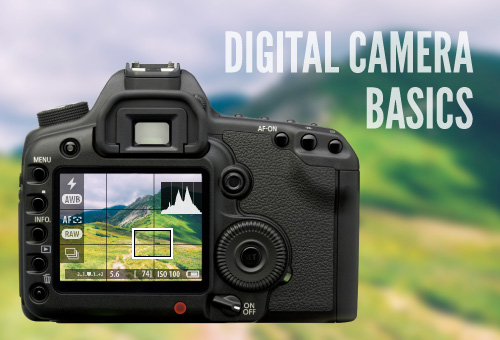A Digital Camera Basics
An electronics on-line discussion forum contains a story about an elderly woman who wanted a simple camera to take pictures of her grandchildren. When she received a digital camera for Christmas, she looked puzzled for a moment and then asked, “Where do you put in the film?” This humorous example demonstrates how the revolutionary technology of digital cameras may be mystifying for those who have difficulty grasping the concept of a “filmless” camera! For almost a century, photography enthusiasts sagely discussed such topics as 35mm film, light meters and F-stops; today, digital cameras have made such topics all but obsolete.
Howstuffworks.com contains an article by Gurevich, Karim, and Wilson that greatly simplifies an explanation of how digital cameras work. Very simply, they explain that CDs, mp3’s, and DVDs all share the same technology: they convert traditional analog “wave” data into digital data based upon “bits.” In so doing, this radical shift in technology has changed greatly – and forever – how we do things and what has become possible including digital “filmless” cameras. While film cameras depend upon chemical and mechanical processes, digital cameras contain a computer that records images electronically.
In 1994, Kodak and Apple developed and sold the first digital cameras. Today there are hundreds of models to choose from, depending upon the type of pictures you need, the complexity with which you’re comfortable, and what digital camera you can afford. For everyday use, most people prefer a “point and shoot” camera that isn’t complex, takes good quality pictures that can be loaded onto computers or printed for personal use and to send to friends, and is affordable. According to a number of consumer guides and customer reviews, the top ten digital cameras in the low, mid, and high price ranges are:
1. Nikon D300 (high)
2. Canon EOS 5D (high)
3. Canon EOS 40D (high)
4. HP Photosmart M547 (low, great value)
5. FujiFilm Finepix S700 (mid)
6. GE A730 (mid)
7. Nikon D200 (high)
8. Canon EOS Digital Rebel Xsi (high)
9. Panasonic Lumix DMC-FZ18 (mid)
10. Canon EOS 30D (high)
The point should be made that what constitutes a “great” digital camera is usually in the eye of the beholder. One person’s “top ten” list is almost certain to differ from another person’s. For example, a digital camera that is making devoted converts is the Casio Exilim series that sells in the mid-level price range, depending upon your digital camera photography needs. On the other end, Digital Camera.com rates the Pentax Optio E-10 as “the worst digital camera ever.”
With all these differing opinions, what’s the best way to buy the digital camera that’s right for you? If you simply want to take personal pictures, choose a digital camera that has at least three megapixels. This will give you good quality pictures at a very affordable price. Remember that the higher the number of megapixels, the better quality your pictures will be, but the digital camera you choose will be more complex and more expensive. Also consider the size and shape of the camera; is it easy for you to carry in your purse or pocket? Finally, be sure your digital camera has at least 256-512 megabites of space on its memory card so you won’t have to buy additional memory cards. Taking all these factors into consideration will help you enjoy capturing treasured memories for years to come.
